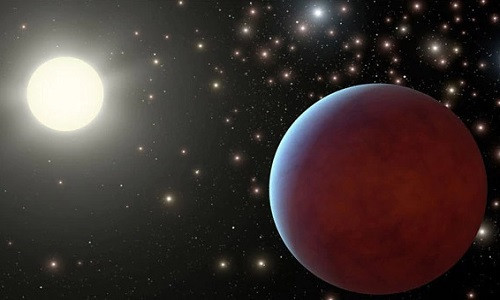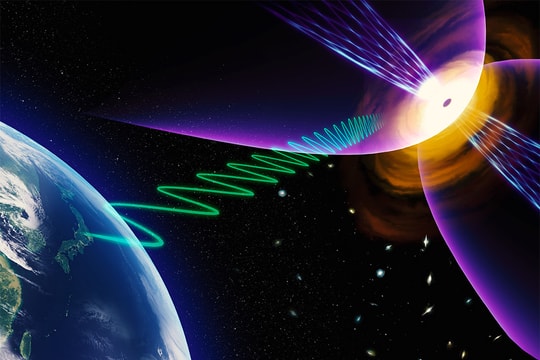The planet absorbs 99% of sunlight
The "hot Jupiter" planet WASP-104b is so dark that it absorbs almost all the sunlight that reaches it.
|
WASP-104b is one of the darkest planets ever discovered. Illustration:NASA. |
WASP-104b may be the darkest planet ever discovered. This hot Jupiter planet is shrouded in a haze that absorbs 97-99% of the light that reaches its surface. A team of researchers from Keele University in Newcastle, England, discovered WASP-104b in a study published on the journal arXiv on April 15, according toNewsweek.
“Of all the dark planets I could find in the studies, this one is in the top five,” said researcher Teo Mocnik. “I think it's in the top three.”
WASP-104b and two other extremely dark planets, TrES-2b and HAT-P-7b, reflect similarly little light, making it difficult to say which planet is the darkest. The differences in reflected light are so small that researchers have not been able to measure them clearly, according to New Scientist.
WASP-104b has a mass similar to Jupiter and orbits close to its star, making it a "hot Jupiter." Most hot Jupiters are dark, reflecting only about 40% of the light that reaches their surfaces. However, WASP-104b is special.
The planet is so close to its star that it takes just 1.75 days to complete one orbit. This proximity is a key factor in WASP-104b’s remarkable darkness, allowing radiation from its host star to penetrate the planet’s clouds, releasing potassium and sodium that absorb starlight.
The team first noticed WASP-104b in 2014 as part of the Wide-Angle Planet Search, and the Kepler space telescope later revealed its ability to absorb light. Astronomers also observed WASP-104b indirectly, as it passed in front of its host star multiple times and partially obscured its light. These transits revealed important information about WASP-104b, including how much light it absorbs.










